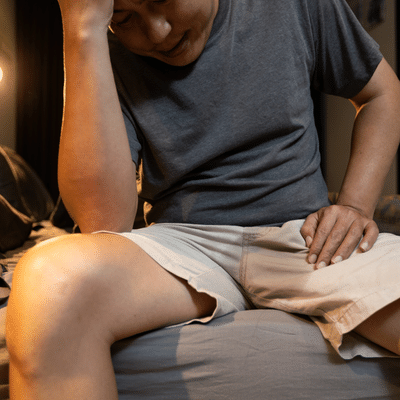Benign Prostatic Hyperplasia (BPH) is a common condition that affects many men as they age. In this comprehensive guide, we will explore what BPH is, how it differs from prostate cancer, the symptoms and management options for BPH, and lifestyle changes that can help alleviate its symptoms.

Section 1: Understanding BPH and its Distinction from Prostate Cancer
BPH (Benign Prostatic Hyperplasia):
- BPH is a non-cancerous enlargement of the prostate gland, typically occurring in older men.
- It is characterized by the overgrowth of prostate cells, leading to an increase in the size of the gland.
- BPH is not cancer and does not increase the risk of developing prostate cancer.
Differences from Prostate Cancer:
- Prostate Cancer is the uncontrolled growth of cancerous cells in the prostate gland.
- While both conditions may share similar urinary symptoms, the nature of the cell growth and the potential for malignancy distinguish them.
Section 2: Symptoms and Management Options for BPH
Symptoms:
- Frequent urination, especially at night (nocturia).
- Difficulty starting and stopping urination.
- Weak urine stream.
- Urgency and a feeling of incomplete emptying of the bladder.
- Urinary retention (inability to urinate).
Management Options:
- Watchful Waiting:
- Recommended for mild symptoms or when the symptoms do not significantly impact the quality of life.
- Regular monitoring of symptoms without immediate treatment.
- Medications:
- Alpha-Blockers: Relax the muscles around the prostate, improving urine flow.
- 5-Alpha Reductase Inhibitors: Reduce prostate size by inhibiting the production of dihydrotestosterone (DHT).
- Combination Therapy: A combination of both alpha-blockers and 5-alpha reductase inhibitors.
- Minimally Invasive Procedures:
- Transurethral Microwave Therapy (TUMT) or Transurethral Needle Ablation (TUNA): Heat therapy to shrink the prostate.
- UroLift System: Small implants to hold the prostate lobes apart, relieving obstruction.
- Surgical Procedures:
- Transurethral Resection of the Prostate (TURP): Removal of excess prostate tissue.
- Laser Surgery: Use of lasers to vaporize or enucleate prostate tissue.
- Open Prostatectomy: Removal of the central portion of the prostate gland in severe cases.
Section 3: Lifestyle Changes to Alleviate BPH Symptoms
- Diet Modification:
- Reducing caffeine and alcohol intake, which can irritate the bladder.
- Avoiding spicy foods and artificial sweeteners.
- Consuming a diet rich in fruits, vegetables, and fiber to promote overall prostate health.
- Fluid Management:
- Limiting fluid intake in the evening to reduce nighttime urination.
- Avoiding excessive drinking before bedtime.
- Regular Exercise:
- Engaging in regular physical activity can help maintain a healthy weight and improve urinary symptoms.
- Bladder Training:
- Techniques to gradually increase the time between bathroom visits, improving bladder control.
Benign Prostatic Hyperplasia (BPH) is a common condition that can affect the quality of life for many older men. Understanding the differences between BPH and prostate cancer, recognizing symptoms, and exploring management options, including medications and lifestyle changes, can help individuals effectively manage this condition and maintain their prostate health.